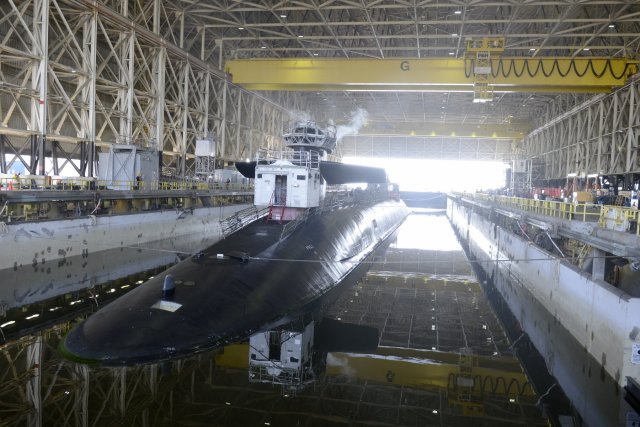Washington. October 11. INTERFAX - In addition to the strategic nuclear submarine USS Tennessee, the US Navy currently has the submarine USS Alaska, which is also equipped with one or two ballistic missiles with new low-power nuclear warheads W76-2, follows from the data of the Federation of American Scientists.
According to the US Navy, the nuclear submarine USS Alaska returned from combat patrol to its Kings Bay base in Georgia in early October.
According to reports, she carried out patrols in the Atlantic and in the Mediterranean Sea. At the end of June, the submarine entered Gibraltar for resupply.
The Ohio-class submarines USS Tennessee and USS Alaska, assigned to the Kings Bay base on the Atlantic coast of the United States, are equipped with twenty Trident II D5 intercontinental ballistic missiles. They carry nuclear warheads W76-1 (with a capacity of 100 kilotons) and W88 (with a capacity of 475 kilotons). One or two missiles have W76-2 warheads with a capacity of 5-8 kilotons, which is about a third of the power of the American atomic bomb dropped on Hiroshima.
A small number of such warheads (according to some sources, about 20 units) were produced in 2019 at the Pantax enterprise in Texas. The submarine USS Tennessee was the first equipped with them.
The W76-2 low-power warheads were produced under the administration of Donald Trump to counter, as she claimed, Russia's possible plans to be the first to use tactical nuclear weapons.
The Pentagon argued for the need to deploy low-power (tactical) nuclear weapons by saying that it would "more effectively deter Russia" and would not allow it to "use its large tactical nuclear weapons potential."
The Trump administration, when deciding to deploy low-power warheads on submarine missiles, stated that these weapons would make a full-scale nuclear war less likely, providing the United States with a more flexible deterrent. According to Washington, this will allegedly prevent the use of tactical weapons by the enemy, in particular by Russia, in the hope that the United States will not use its powerful strategic nuclear weapons in response to a limited nuclear attack.
As noted in the American nuclear strategy adopted in 2018, the presence of low-power nuclear weapons "will ensure that potential adversaries will not be able to take advantage of limited nuclear escalation, making the use of nuclear weapons less likely."

